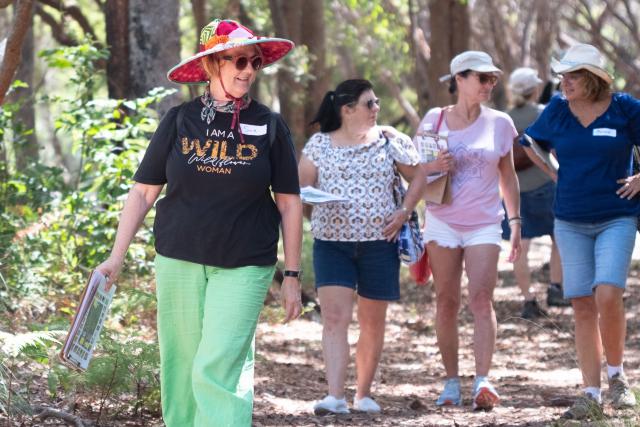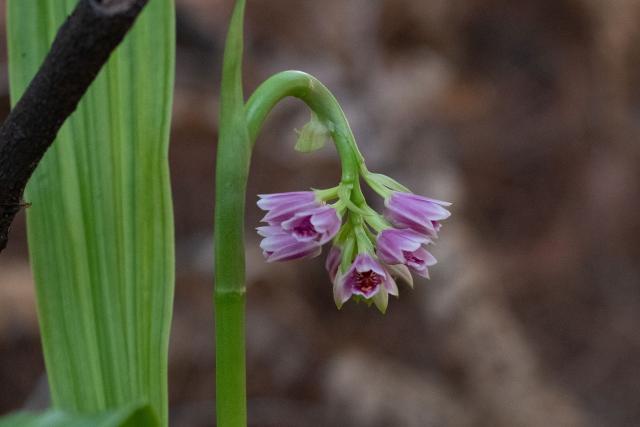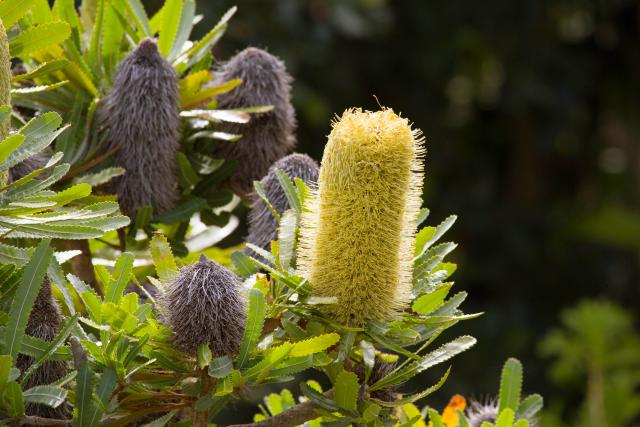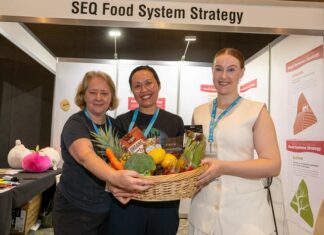A wildflower walk in the national park with Associate Professor Dr Susan Davis is much more than your average bushwalk.
Having spent a number of years working on the power of the arts and creativity to enhance learning, for which she was last year awarded an Order of Australia Medal (OAM), Dr Davis recently began hosting wildflower walks as part of her Wild/flower Women project which was born out of work with the Noosa Biosphere and community groups.
The walks enable participants to discover more about local wildflowers, about each other and hear some interesting stories about the people and places connected to some of Noosa’s nicest places.
With the assistance of her son, Jackson, Dr Davis last Sunday hosted a wildflower walk through Girraween Sunshine Beach and Noosa Today went along.
The area from Noosa headland national park to Sunshine Beach was designated an Aboriginal reserve in the 1870s, she told the group of walkers.
When the designation was revoked, some of the land was sold off for farming. A large section at Sunshine Beach was bought by businessmen TM Burke and subdivided in the 1920s. Then called Golden Beach, the land was hard to sell so people were given the opportunity to pay off their plots over 20 years.
But in the 1930s with rates unpaid a lot of land passed into council hands and, over the years, sections have been carved off for services such as schools, churches and aged care, she said.
It wasn’t until the 1960s that Girraween became recognised as a wildflower area at a time when in the summer flowering season some of the most sought after blossoms, Christmas Bells (Blandfordia grandiflora) could be seen in their thousands.
In 1953, wildflower artist Kathleen McArthur set herself the task of recording all the native plants in bloom across key locations of the Sunshine Coast region, a project which fed into numerous publications including weekly newspaper columns and books.
A wildflowering expedition with her friend, poet Judith Wright in the same year to the peak of Mt Tinbeerwah, provided the spark of the idea for a national park at Cooloola.
“They looked north and said this would make a great national park,“ Dr Davis said.
As guests wandered along the path Dr Davis pointed out native flowering plants that are easily missed by the casual observer, such as Shepherd’s Crook (Geodorum densiflorum), a delicate orchid, or a Wallum banksia (Banksia aemula), after which the heathland or wallum, as it was known by the local Aborigianals, was named.
“It’s the tallest tree on the edge of the wallum. It’s warty bark was used for dying and strengthening nets, and its flowers were dipped in water to make a sweet, fermented drink,“ she said.
“The cones go all hairy and were used as models for Mary Gibbs (Snugglebot and Cuddlepie) Banksia men.“
Dr Davis referred several times during the morning walk to Kathleen McArthur and Judith Wright, pioneer conservationists, who in the 1970s fought one of Australia’s first major conservation battles, at the time against Premier Joh Bjelke-Petersen to retain Cooloola, an area from Noosa to Rainbow Beach, for national park.
From her home in Caloundra Kathleen created national awareness of the existence of the Cooloola region, which at the time was under threat from sandmining and development, in a campaign that involved the distribution of 100,000 protest cards, 15,000 being sent to the Queensland Premier.
Noosa conservationist Arthur Harold described Kathleen at the time as the “cunning mind” behind the cards.
As we passed a medium-sized bush with a mass of white flowers Dr Davis told the walkers Kathleen named her house Midyim after the flower (Austromyrtus dulcis).
The wallum is a mix of mud and sandy soil, low in nutrients and highly acidic. Plants have to adapt to be quite hardy, Dr Davis said. The Midyim is an example of just such a hardy plant that pushes out its abundant blossoms in its process of refertilisation and reproduction, creating in the process berries which make “good bush food“.
The Wallum banksia is also perfectly adapted to the region. Requiring fire to pop open its seed pods after flowering the trees’ lumpy bark both protects the tree from fire and provides a trail for the fire directing it upward to its flowers.
In 2019 bushfires raged through some of Noosa’s Wallum areas. Since then Dr Davis has watched the land recover with some of the most spectacular displays of wildflowers occurring just two years after the fires.
Dr Davis is an Adjunct Associate Professor and former Deputy Dean Research for the School of Education and the Arts at CQ University.
She is also a founding member of the Sunshine Coast Creative Alliance, now recognised as the peak arts and industry group on the Sunshine Coast.
The Wild/flower Women project involves exhibitions, workshops with visiting artists as well as wildflower walks.
The next wildflower walk at Girraween Sunshine Beach, a two and a half hour walk from Bicentennial hall to the police station, and including morning tea will be held on Sunday 22 January.
For more information on Wild/flower Women or to book a walk, visit wildflowerwomen.com.au












